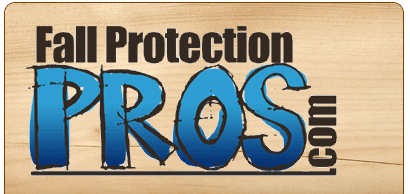Some of you may not know this, but there actually three different levels and degrees of fall protection. And OSHA likes them in a particular order. So we thought we'd highlight these areas of fall protection in the order OSHA wants you to go about eliminating fall hazards from your job site.
Fall Prevention - Prevent your men from reaching the hazard by establishing a barrier between your guys and the potential fall hazard. This is most commonly represented by the use of guardrails.
Pros: - Least risk for a fall to occur - No training necessary - No equipment per worker - Anual maintenance and inspection - No lost time.
Cons: - Higher up front costs
Fall Restraint - A fall restraint system uses a tie-off system to prevent your workers from reaching the fall hazard. Think of a dog on a leash. Or you could think of harness and lanyard at a set length away from the hazard.
Pros: - Better than fall arrest - Lower up front costs.
Cons: - Thorough training required. - Equipment needed for each individual worker. - Inspection and maintenance before each use. - Equipment must properly fit each worker, adding extra cost. - Requires setup time - The potential risk to the user.
Fall Arrest - Fall arrest systems stop or arrest a fall that is occurring which keeps your workers from going splat. These systems require an anchor point,a harness, and a shock absorber of some sort.
Pros: - Lower up front costs, initially.
Cons: - The highest risk of potential injury to the worker. - Thorough training required. - Equipment is required for each individual worker. - Inspection and maintenance before each use. - Equipment must properly fit each worker, adding extra cost. - Requires setup time.
So there you have it. The basic differences between your options. Sometimes, there is only one option available, but if you do have a choice make sure you work your way down the list and not up the list. A guardrail is always your safest bet.
If you have any questions, as always let us know.




